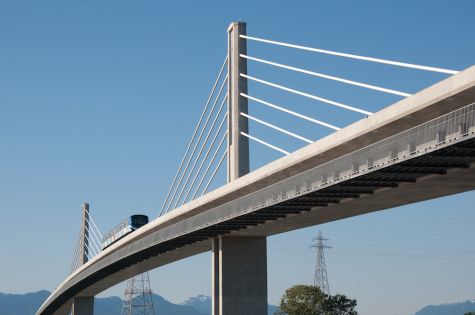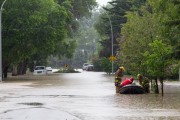If you show up at the landfill with a truck full of garbage, you have to pay to dump it. But if you pump pollution into the atmosphere, most Canadian jurisdictions provide a free dumping ground.
Outside of B.C. there aren't any simple and broadly applied financial signals in Canada to encourage reductions in greenhouse gas emissions. Essentially, the atmosphere is treated as a free and bottomless landfill. It's no surprise then that emissions have been on an upward trend in Canada for as long as we've been measuring them.
Most climate change experts agree putting a price on greenhouse gas emissions is a vital strategy in a portfolio of solutions to fight dangerous climate change. Under an effective carbon pricing system every tonne of pollution comes at a cost, rather than being free. The dirtier the energy source, the more expensive it becomes.
The idea is not a radical one. If we want families and businesses to adopt green technologies, it's only logical to make the dirtier options more expensive and the cleaner options relatively more affordable. Pricing pollution empowers the market to identify and develop the most cost-effective solutions. Instead of building coal plants, we'll build wind turbines; instead of driving gas-powered cars, we'll choose electric vehicles powered by renewable energy.
 There are two ways to put a price on carbon: a carbon tax or a cap and trade system. Both can apply to consumers and industry.
There are two ways to put a price on carbon: a carbon tax or a cap and trade system. Both can apply to consumers and industry.
To implement a carbon tax, the government sets a price per tonne of emissions and adds that cost to the price of different energy sources. A $75 per tonne carbon tax would more than double the cost of coal-fired electricity, for instance, but it wouldn't affect the price of solar power. B.C. implemented a carbon tax in 2008 and Sweden and Norway have charged similar taxes since the early '90s. Ireland implemented a carbon tax this year.
Cap and trade systems are more complicated, but can also be effective if the urge to introduce loopholes is resisted. The European Union's cap and trade system was launched in 2005 and is the world's largest.
In an effective cap and trade system, governments set a limit on total emissions and sell allowances equivalent to that cap. Emitters buy allowances for every tonne they emit. The lower the cap, the fewer the allowances and the higher the price — thus the stronger the incentive to reduce emissions.
The essential elements of an effective carbon price
There are four factors that determine if carbon pricing will be fair and effective.
1) How high is the price of carbon? The gap between the costs of clean and dirty energy is still wide in many cases, so if the price of dirty energy isn't increased enough by a carbon price, clean solutions risk being left behind.
2) How broadly is the price applied? The carbon price will only affect the emission sources that it is applied to, so the narrower the application the more emitters that can continue to pollute for free.
3) How well are people living on low incomes protected? People living on low incomes already spend too much of their income on energy and aren't able to afford the solutions that could reduce their emissions. Any carbon pricing system should ensure that these people aren't adversely affected and that they have an opportunity to be part of the solution.
4) How is revenue from carbon pricing used? There's no magic formula, but governments need to find a balance between investing in projects that reduce emissions, protecting low-income families and other priorities such as paying down debt and lowering other taxes.
Leading by example: B.C.'s carbon tax
With one of the most comprehensive carbon taxes in the world, B.C. provides a solid example. Applying to almost three quarters of provincial emissions, the tax will ramp up to $30 per tonne of carbon dioxide by 2012. Revenues are used to reduce other taxes and provide some protection to low-income families.
That's not to say there aren't opportunities to improve B.C.'s carbon tax. The biggest challenge will be getting from $30 per tonne to $200 per tonne in the next ten years in a way that protects low-income families. That's the price that economic modelling shows is needed for Canada to do its fair share of an international effort to avoid dangerous climate change.
Just as big a challenge will be getting the rest of Canada on a comparable track. In doing so, Canadians will begin to put their money where their mouths are in recognizing that pollution and climate change cost us all. By reflecting the true cost of dirty energy, carbon pricing is a market-based solution that directs investment — and attention — toward a cleaner future.
Download our fact sheet on the carbon tax: Putting a Price on Climate Pollution
It's part of a three-part series, including:






